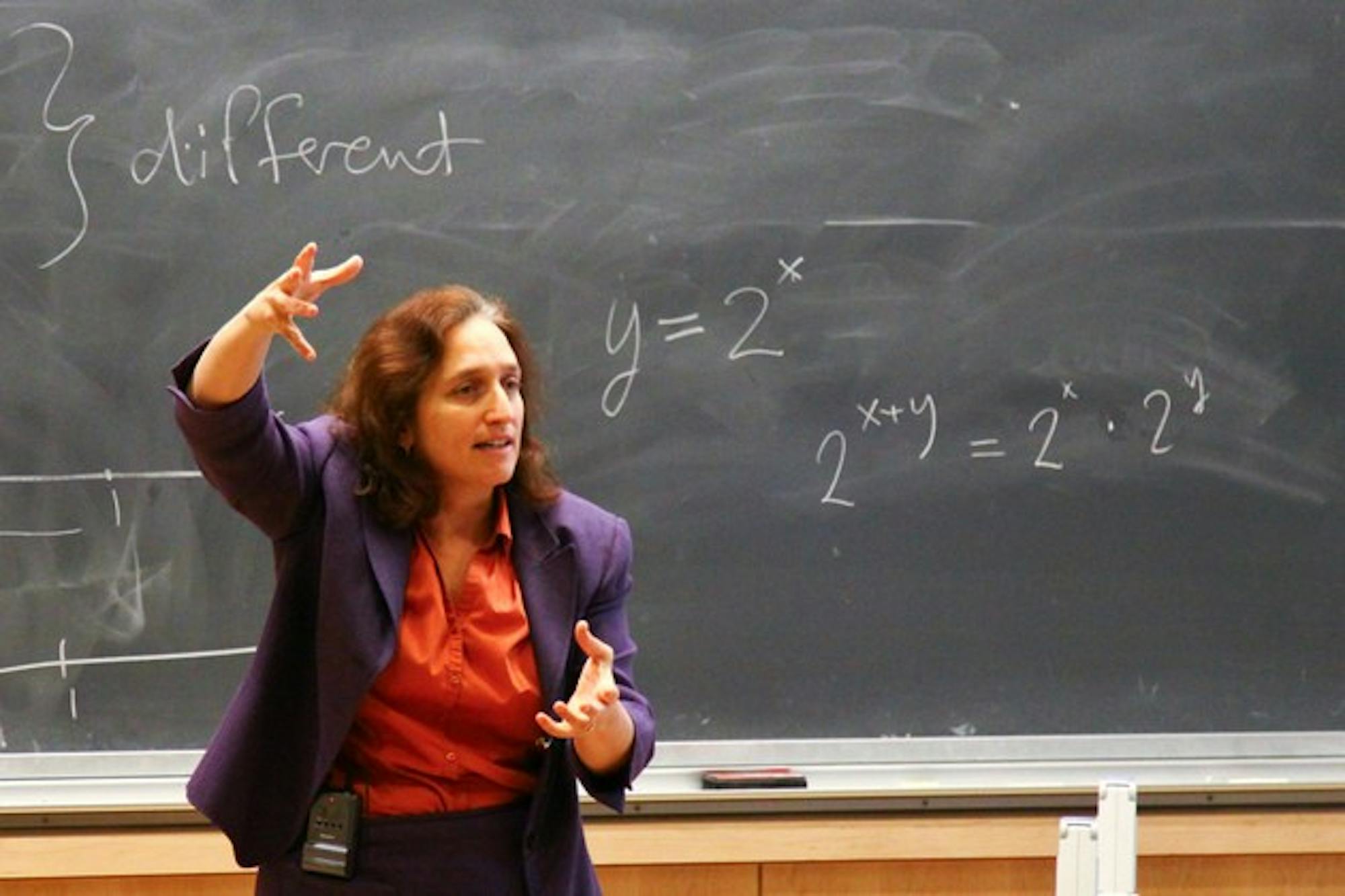The answer, she revealed, was both.
During her lecture, Singer, the managing partner of Wise Acre Real Estate and Campaign Scientific, and a data strategist at Athenian Properties, explained the historic relationship between math and physics, analyzing the reasons for their divergence and the ways they have influenced each other.
Although Singer is a trained mathematician, she said was equally supportive of the physicist's perspective.
"I used to make fun of the physicists' attitude towards solving problems, but now I understand that it is, in fact, a good attitude," she said.
Singer said she was "astonished" by the new discoveries made since she left her job as a professor in 2002. Singer taught at Haverford College for 11 years, according to her website.
In the early 1800s, Singer said, scientists defined mathematics and physics under a single umbrella: natural philosophy. Scientists like Issac Newton, Sophie Germain, Johannes Kepler and Augustin-Louis Cauchy were all considered natural philosophers, or people who studied the natural world, Singer said.
The fields began to divide in the late 1800s, she said, with individuals coming to identify with one of the two fields.
"The big question is, what happened between the early 1800s and late 1800s?" she said. "Why was there a split into mathematics and physics? The answer: Fourier happened."
Joseph Fourier is best known for his development of the Fourier series, a method of breaking sounds into components. The method explains, for example, why a violin sounds different from a flute, Singer said. But in addition to the Fourier series, Fourier came up with the theory of heat distribution, a model for how heat travels on a thin, metal plate.
"This [theory] lit up a crisis in the scientific world," Singer said. "And the resolution of this crisis split natural philosophy."
Natural philosophers had formerly agreed upon the definition of a function as a formula and a formula as a function, according to Singer. But to support his theories, Fourier used functions, but not formulas contradicting the commonly held notion that the two were interchangeable, she said.
As a result of this unprecedented disagreement, mathematics and physics diverged from one another. Those who agreed with Fourier became physicists and those who didn't became mathematicians, she said.
Singer explained the difference in methodologies employed by mathematicians and physicists.
"Mathematicians rely on classifications, which then lead to generalizations, and ultimately the way we check over our work or justify an idea is through proofs," she said. "Physicists, on the other hand, went entirely the other way. They make predictions sometimes predictions that only apply to one specific case and then experiment to test these predictions. And I couldn't disagree that's perfectly good physics."
Singer said she was disheartened by the general inability of mathematics and physics majors to communicate intellectually with each other despite taking similar courses. She illustrated the miscommunications by showing a cartoon of a math major and a physics major bickering over the meaning of theories that can be explained in both subjects' terms.
On the more "optimistic" side, Singer discussed the mutually beneficial interactions between mathematics and physics over their history. She explained several cases of how early discoveries in mathematics were adapted to 20th century physics applications.
Physics's study of elementary particles is actually an extension of math's representation theory, Singer said, which predicted the existence of Omega-minus particles. Representation theory also shows physicists which atoms they should expect to find on the periodic table, Singer said.
"It's not an accident that representation theory, an inherent part of mathematics, can lead to predictions in quantum mechanics," Singer said.
Despite their close connections and shared origin, Singer said it was unlikely that mathematics and physics would ever reunite in a single field.
"There's a lasting split," she said. "We obviously can't go back in time. But at least, physics and mathematics are beginning to interact."




